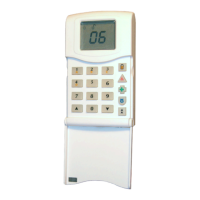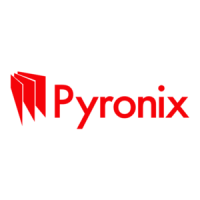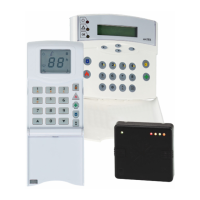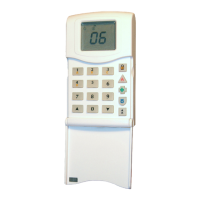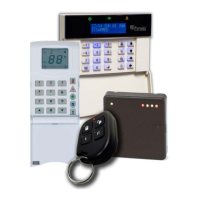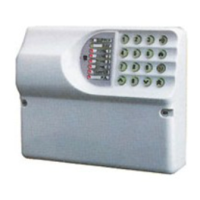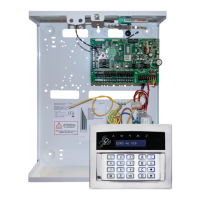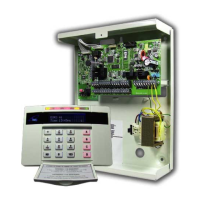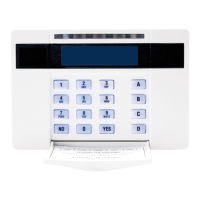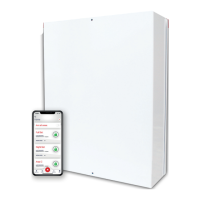Matrix 832 / 832+ / 424
Page 42 RINS428-5
Arm Modes and Partitions
The system can be divided into up to 4 independent subsystems. One zone can be allocated to one
subsystem. Within each subsystem the zones can be operated in 4 different Arm Modes configurations A, B,
C and D.
Example
Partition 1 Partition 2 Partition 3 Partition 4
Arm A Arm A Arm A Arm A
Arm B Arm B Arm B Arm B
Arm C Arm C Arm C Arm C
Arm D Arm D Arm D Arm D
Arm A: Whole system armed, nobody on premises – Away
Arm B: Upstairs disarmed, downstairs armed – Home
Arm C: Upstairs armed, downstairs disarmed – Home
Arm D: Garage armed, the house disarmed – Home
NOTE: The engineer has the ability to configure the Matrix panel to the users exact requirement.
Zone Configuration Options Available
Display Type Description
o
Entry / Exit
This is a zone that allows limited-time access to the premises in order to arm or
disarm the system. This zone is typically connected to a magnetic door contact.
l
Access
This is a zone which, on arming the panel, allows access to the Entry / Exit zone.
However, if the panel is armed and an Access zone is triggered before an Entry /
Exit zone then an alarm will be generated immediately.
w
Immediate
This is a zone, which will, when activated, create an instant alarm when the panel is
armed.
rs
Medical
Zone
The medical zone will send an emergency message to the central receiving station,
or emergency services.
5
Arm Zone
The arm zone is used to end the exit time if the Arm option ‘Push to arm’ is enabled
- see section 8.11 Alarm Options. After the activation of this zone, the partition will
not arm until the expiry of the Final Exit Delay - see section 8.12 System Timers.
<
Omitted
(Bypassed)
A zone programmed as an Omitted zone by the Engineer will be ignored by the
panel. It allows the user to continue to use the alarm system even if a fault has been
discovered on one or more zones.
t
Fire
Triggering the fire zone will always cause an alarm activation, regardless of whether
or not the panel is armed. A fire alarm is identified by a three note-ringing sound,
which is easily distinguished from all other tones. The external sounder will operate
at 1 second intervals.
n
Personal
Attack
Triggering the Personal Attack (P.A.) zone will always cause an alarm activation
regardless of whether or not the panel is armed. The P.A. zone may be
programmed as silent. A silent P.A. activation will not cause the bell or strobe to
operate, but the central station will be informed of a P.A. activation. One of the
programmable outputs will operate if the system has been programmed to do so.
u
24-Hour
Zone
Triggering a 24H zone will always cause an alarm activation regardless of whether
or not the panel is armed (Fire, Personal Attack and Tamper are all 24 hour zones).
;
Keybox
This zone type is for connection to an external box, which when opened will cause
an activation of this zone, but will not cause an alarm. Activations of this zone are
logged and reported to the central monitoring station, using Contact ID 250.
:
Shunt
Keypad
Zone Type
This zone type is for connection to an external keypad with a pulsed output. During
the exit delay an activation of this zone causes the end of the exit time, a
programmable settling time (Final exit delay) is commenced before the panel fully
arms. An activation of this zone during armed mode causes the entry time to start.
f
Tamper
Triggering the Tamper zone will always cause an alarm activation regardless of
whether or not the panel is armed. From system options, it may be programmed to
activate the internal siren only or internal and external sounder, in disarmed mode.
However in armed mode both sounders will operate.
i
Latch
Keyswitch
It is possible by using this type of zone to arm / disarm the system in any arm mode
by using an external latched switch.
k
Unused
This zone is completely ignored by the system, however it is good practice to close
the zone by linking it with a 2K2 resistor.
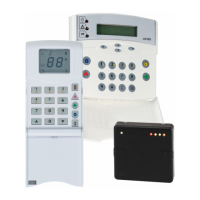
